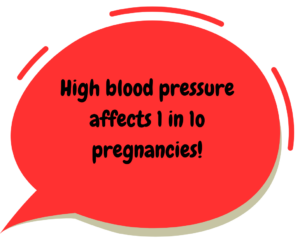Placental conditions
The POPPY study is looking into why some women are at an increased risk of placental conditions.
Placental conditions include:
Gestational hypertension
It is high blood pressure that can occur after 20 weeks of pregnancy. Click here to learn more about gestational hypertension.
Pre-eclampsia
It is high blood pressure that can occur after 20 weeks of pregnancy, often in combination with protein in the urine (proteinuria) and/or problems with the kidneys, liver or brain. Click here to learn more about pre-eclampsia.
Fetal growth restriction
This is where a baby is smaller than expected or when a baby’s growth slows or stops during pregnancy. Click here to learn more about fetal growth restriction.
What is blood pressure?
Blood pressure is a measure of the force that the heart uses to pump blood around the body. It is measured in millimetres of mercury (mmHg) and is given as 2 figures: systolic and diastolic.

We consider high blood pressure to be equal to or higher than 140mmHg (systolic – top number) and/or 90mmHg (diastolic- bottom number).

